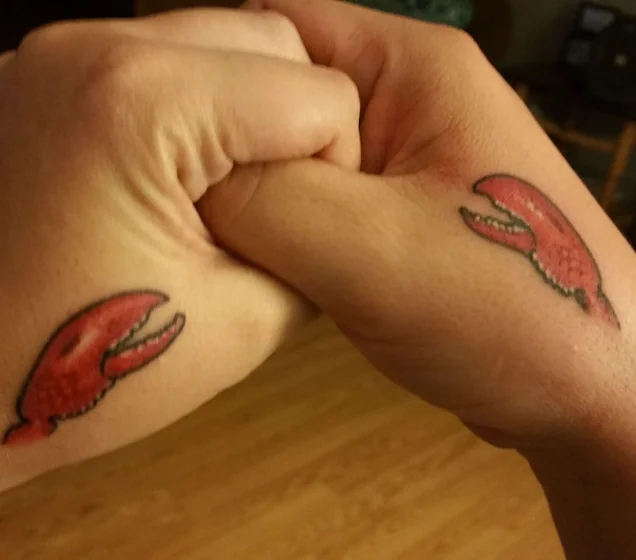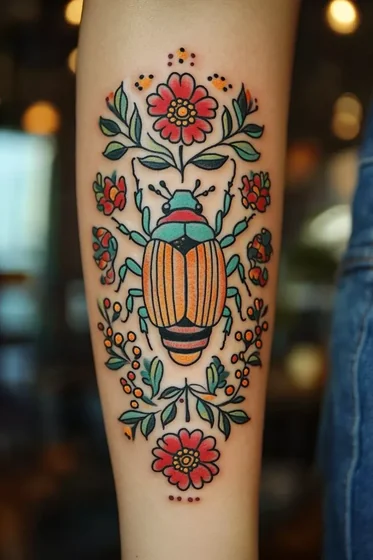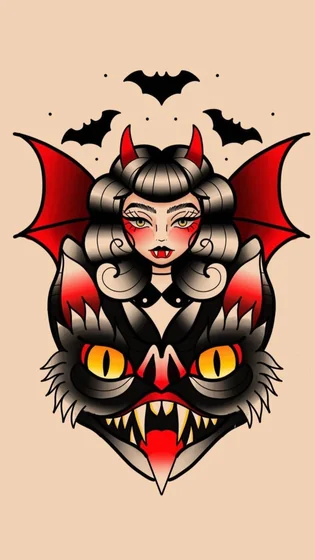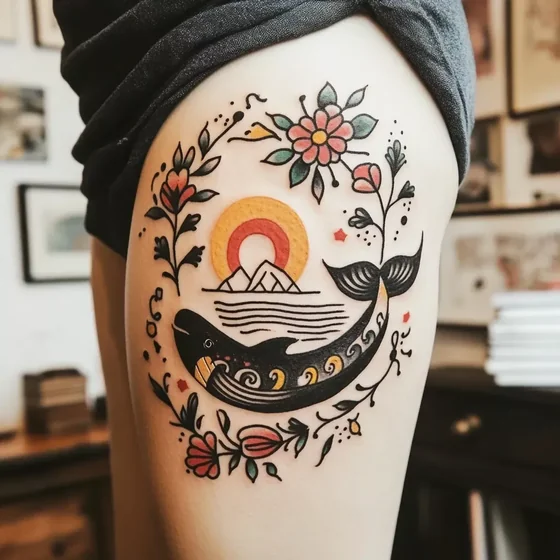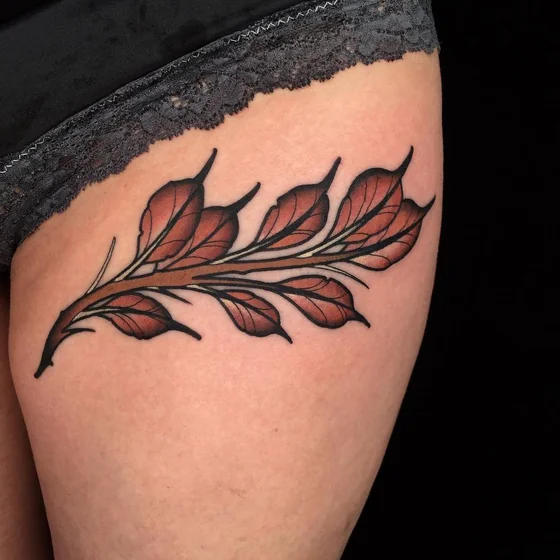Filters
Tattoo Ideas
Start Your Tattoo Design Journey
0Tattoos Designed This Week On Tatspark
Now in Beta — share your feedback and shape what's next.
Why Small-Scale Traditional Works for Women
Small traditional tattoos offer women entry into classic Americana without overwhelming delicate frames. Designs scaled to 2-3 inches retain the style's signature bold outlines while fitting discreetly on wrists, ankles, or behind ears. The limited color palette—typically 2-3 hues per piece—keeps small work crisp rather than muddy like detailed realism at tiny scales.
Women gravitate toward traditional motifs with romantic or nature-based symbolism. Single roses represent love and beauty, swallows symbolize loyalty and return home, and cherries convey playful femininity. These traditional tattoo ideas translate beautifully to compact sizes because their simple shapes remain readable even at reduced dimensions.
Selecting Motifs That Scale Successfully
Size-Appropriate Design Categories
- Floral Singles (1-2 inches): Perfect for fingers, behind ears, or inner wrists | Heal quickly with minimal aftercare | Ideal first pieces for traditional style testing
- Animal Portraits (2-3 inches): Suit ankle, forearm, or shoulder blade placements | Require experienced artists for facial detail clarity | Best for those wanting recognizable imagery
- Objects & Symbols (1.5-2.5 inches): Daggers, lanterns, keys work on any flat surface | Offer maximum flexibility for future expansion | Appeal to collectors building cohesive themes
Small traditional designs avoid the commitment anxiety some women feel about large-scale work. Starting with compact pieces lets you test pain tolerance, healing capacity, and lifestyle compatibility before investing in bigger compositions.
Placement Strategies for Professional Flexibility
Women in corporate or client-facing roles benefit from strategic placement that allows total concealment. Inner wrists hide under watch bands or bracelets, ankle pieces disappear beneath pants or boots, and upper thigh locations remain completely private. Behind-ear designs peek out with updos but vanish with hair down.
Ribcage and underboob placements offer intimate positioning for small traditional work. These areas rank 7-8/10 on pain scales due to proximity to bone, but smaller sizes mean sessions last only 45-90 minutes. Consider breathing discomfort—ribcage work requires holding still during needle passes over expanding lungs.
Color Choices That Enhance Femininity
Traditional style typically uses primary colors, but women often request softer variations. Pastel pink roses instead of bright red create vintage femininity while maintaining bold outlines. Muted teal swallows offer oceanic elegance without harsh contrast. Discuss custom color mixing during consultations—quality artists can adjust palettes while preserving traditional integrity.
Black-only traditional pieces suit minimalist aesthetics perfectly. Single-color work ages exceptionally well and pairs beautifully with gold or silver jewelry. The high contrast looks striking on all skin tones without requiring regular touch-ups for color correction.
Building Collections Over Time
Many women start with one small traditional piece then gradually add coordinating designs. Plan thematic consistency early—all nautical motifs, all floral elements, or all vintage objects—to ensure future additions feel intentional rather than random. Space pieces at least 2 inches apart to allow breathing room and potential expansion.
Gap-filler options include stars, dots, tiny hearts, or geometric elements added between existing work. These connectors transform scattered pieces into cohesive sleeves or collages over years without requiring complete redesigns.
Comparing Masculine Traditional Approaches
Men typically choose larger power symbols and occupational imagery—explore bold options for men featuring eagles, ships, and weapon motifs.
Aftercare for Delicate Placements
Small traditional tattoos on bony areas like wrists or ankles experience more friction during healing. Wear loose clothing over fresh work and avoid tight shoes or jewelry that rub healing skin. Apply thin moisturizer layers 2-3 times daily—over-moisturizing small pieces can cause color loss during scabbing.
Fingers and hands require extra care because constant movement and washing stress healing skin. Expect 20-30% faster fading on hand placements compared to protected body areas. Budget for touch-ups every 2-3 years if choosing finger or palm locations.

